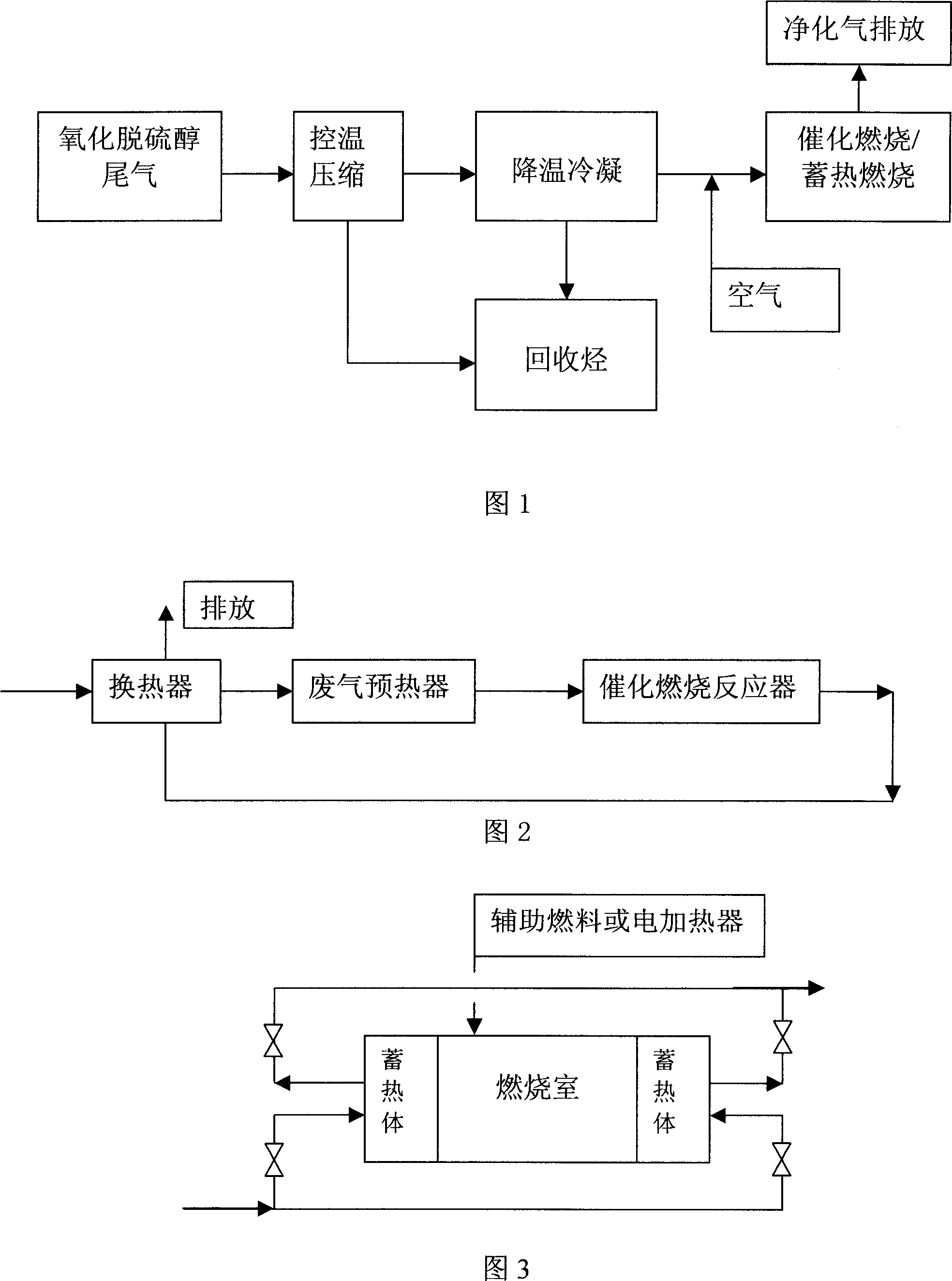Method for processing light hydrocarbon oxidation sweetening tail gas
A technology for oxidative sweetening of mercaptans and light hydrocarbons, applied in chemical instruments and methods, separation methods, steam condensation, etc., can solve problems such as increased operating costs, difficult to meet emission standards, and industrial application restrictions, and achieves easy operation and automatic control The effect of high degree, low equipment investment and operation cost
- Summary
- Abstract
- Description
- Claims
- Application Information
AI Technical Summary
Problems solved by technology
Method used
Image
Examples
Embodiment 1
[0022] Gasoline air oxidation sweetening tail gas of an enterprise contains 32v% hydrocarbons, the tail gas temperature is 53°C, and the oxygen content is 17v%. First compress the tail gas to 2.0MPa, then use the enterprise's circulating cooling water to cool down to 40°C, and recover condensed hydrocarbons, then condense and cool the tail gas to -10°C, single-stage compression refrigeration, recover oily condensate, and condensate The hydrocarbon content of the tail gas is 8.9v%, and the hydrocarbon recovery rate is over 60v%. After exchanging heat between the condensed tail gas and the pre-condensed gas, use air to adjust the total hydrocarbon concentration to 3000-8000 μL / L (calculated as methane), and use regenerative combustion to purify the gas. The total hydrocarbon concentration of the purified gas is less than 120 μL / L (calculated as methane). In line with national emission standards. The regenerative combustion adopts the operation mode shown in Figure 3. The regene...
Embodiment 2
[0024] Gasoline sweetening tail gas by air oxidation in a certain enterprise contains 25v% hydrocarbons, the tail gas temperature is 45°C, and the oxygen content is 16v%. First compress the exhaust gas to 0.8MPa, then use the enterprise's circulating cooling water to cool down to 40°C, and recover condensed hydrocarbons, then condense and cool the tail gas to -40°C, use two-stage compression refrigeration, recover oily condensate, and condensate The tail gas hydrocarbon content is 4.1v%, and the hydrocarbon recovery rate is over 80v%. After exchanging heat between the condensed tail gas and the pre-condensed gas, use air to adjust the total hydrocarbon concentration to 3000-8000 μL / L (calculated as methane), and use catalytic combustion to purify it. National emission standards. Catalytic combustion adopts the operation mode shown in Figure 2. The catalytic combustion catalyst is a honeycomb catalyst containing Pt0.26wt% and Pd0.13wt%. -1 .
Embodiment 3
[0026] Gasoline air oxidation sweetening tail gas of an enterprise contains 30v% hydrocarbons, tail gas temperature is 50°C, and oxygen content is 17v%. First compress the tail gas to 1.2MPa, then use the enterprise's circulating cooling water to cool down to 42°C, and recover condensed hydrocarbons, then condense and cool the tail gas to -35°C, use two-stage compression refrigeration, recover oily condensate, and condensate The tail gas hydrocarbon content is 3.2v%, and the hydrocarbon recovery rate is over 85v%. After exchanging heat between the condensed tail gas and the pre-condensed gas, use air to adjust the total hydrocarbon concentration to 3000-8000 μL / L (calculated as methane), and use catalytic combustion to purify it. National emission standards. The catalytic combustion adopts the operation mode shown in Figure 2. The catalytic combustion catalyst is a spherical alumina carrier catalyst with a diameter of 4mm containing Pt0.05wt% and Pd0.02wt%. -1 .
PUM
| Property | Measurement | Unit |
|---|---|---|
| diameter | aaaaa | aaaaa |
Abstract
Description
Claims
Application Information
 Login to View More
Login to View More - R&D
- Intellectual Property
- Life Sciences
- Materials
- Tech Scout
- Unparalleled Data Quality
- Higher Quality Content
- 60% Fewer Hallucinations
Browse by: Latest US Patents, China's latest patents, Technical Efficacy Thesaurus, Application Domain, Technology Topic, Popular Technical Reports.
© 2025 PatSnap. All rights reserved.Legal|Privacy policy|Modern Slavery Act Transparency Statement|Sitemap|About US| Contact US: help@patsnap.com

